Specializing in Anterior Cruciate Ligament (ACL) Tear
Award-Winning Orthopedic Services in Orange County
About the Anterior Cruciate Ligament (ACL)
The cruciate ligaments (anterior and posterior also called ACL and PCL) are one of four main ligaments attaching femur (thigh bone) to the tibia (shin bone) (Figure 1). These ligaments provide the front to back and rotational stability of the knee and prevent movement of the tibia underneath the femur. They are called cruciate ligaments because they cross inside the knee. During cutting and pivoting sports and activities – such as soccer, basketball, football and downhill skiing, the cruciate ligaments control the stability of the knee and prevent it from giving way.
Anterior cruciate ligament injuries (ACL) can occur when the foot is planted and the knee hyperextends (with knee fully straight) and are usually non-contact related. However, ACL tears may occur with contact as well usually with a direct blow from the outside of the knee while the foot is planted.
Symptoms of an ACL Tear
Patients with an ACL injury will often have the sensation of feeling a “pop” in their knee when the tear occurs followed by a relatively rapid onset of swelling over the next hour or two. There may be an associated sense of “shifting,” or giving way, as the ACL tears due to the lack of control of the tibia under the femur. As swelling progresses, the patient may notice a loss of range of motion (difficulty bending or straightening the knee). Many patients are able to put weight on the leg, but often require crutches initially as they do not “trust” the knee and may have a sense that is going to give out underneath them.
In summary, the symptoms of an ACL Tear include:
- A “popping” sensation in the knee
- Severe pain
- Rapid swelling
- Loss of range of motion
- A feeling that the knee will “give way” while bearing weight
Diagnosis of an ACL Tear
A thorough clinical exam by a knee surgeon will be necessary to confirm the diagnosis of an ACL tear. Patients with an ACL injury will often have swelling, decreased range of motion as well a positive Lachman or anterior drawer test. In this test, the physician will check to see if the ligament is competent and stops them from pulling the tibia forward on the femur. The doctor may also check for other associated injuries as well, such as an additional ligament injuries or meniscus tears.
Additional imaging studies are used to help confirm the diagnosis:
- X-rays can be helpful in select cases as there can be a bony avulsion (small piece of bone) that is pulled from its origin when the injury occurs. The absence of this does not, however, rule out this ligament injury.
- MRI is often used to confirm diagnosis (Figure 2a), and can help characterize other associate injuries such as cartilage, additional ligament or meniscus tears.
Nonsurgical Treatment for ACL Tears
After an ACL tear diagnosis is confirmed, the physician will discuss treatment options with their patient. Conservatively, patients do not have to undergo surgery ACL reconstruction however, due to the blood supply of the ligament, it often will not heal completely. Some patients may continue to have a sense of instability, especially if they engage in cutting or pivoting type sports. Braces can support the knee and improve the stability of the knee with certain activities.
Surgical Treatment for ACL Tears
Long term, continued ACL deficiency and instability may cause injury to the meniscus and result in a higher risk of osteoarthritis compared to an uninjured knee. Many patients will choose to have an ACL reconstruction, using another tendon in the knee or from a cadaver to build a new ACL (Figure 2b). The options to reconstruct the ACL may include your hamstring, patellar tendon, quadriceps tendon or an allograft (taken from a cadaver). Surgery is most often performed arthroscopically (Figure 3).
Physical Therapy for ACL Tears
Physical therapy is often a main stay of treatment initially to improve range of motion, gait and function whether or not surgery is pursued. After surgery, physical therapy will often continue for 7-9 months with a full return to all sports and activities expected sometime thereafter.
Figure 1: Cruciate ligaments of the Knee
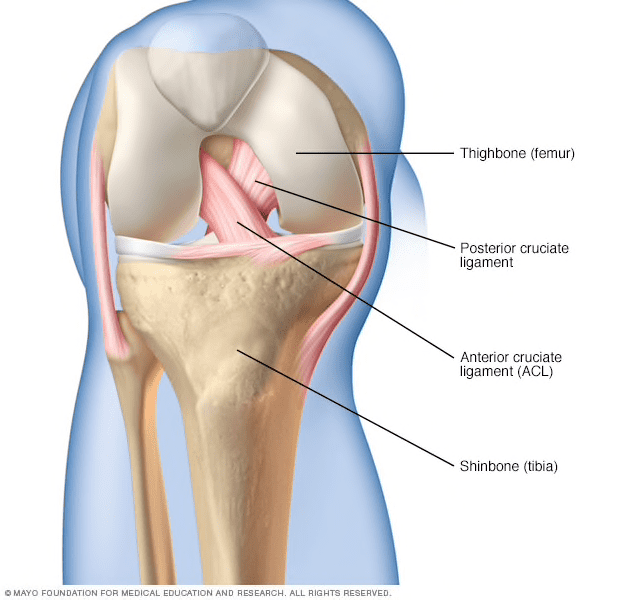
Figure 2: MRI of a. ACL rupture
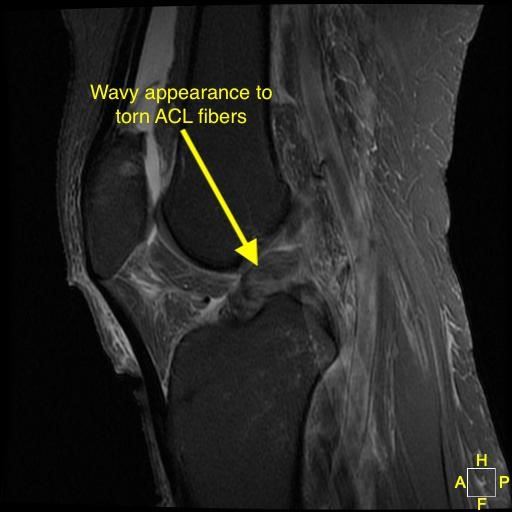
b. Intact ACL after reconstruction
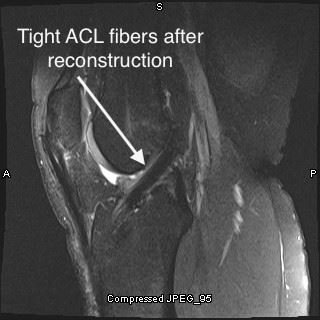
Figure 3: Torn ACL fibers
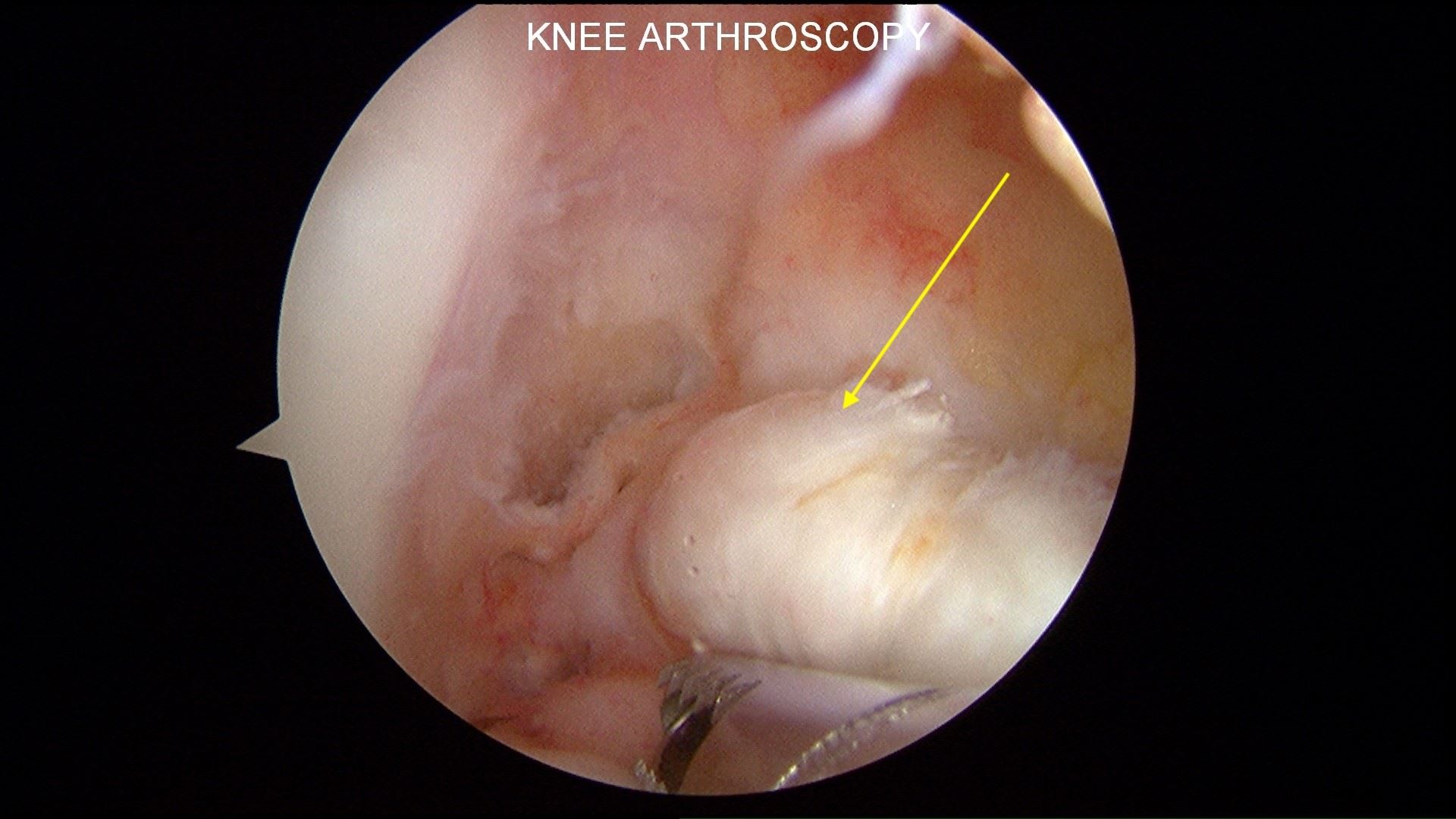
After reconstruction with patellar tendon
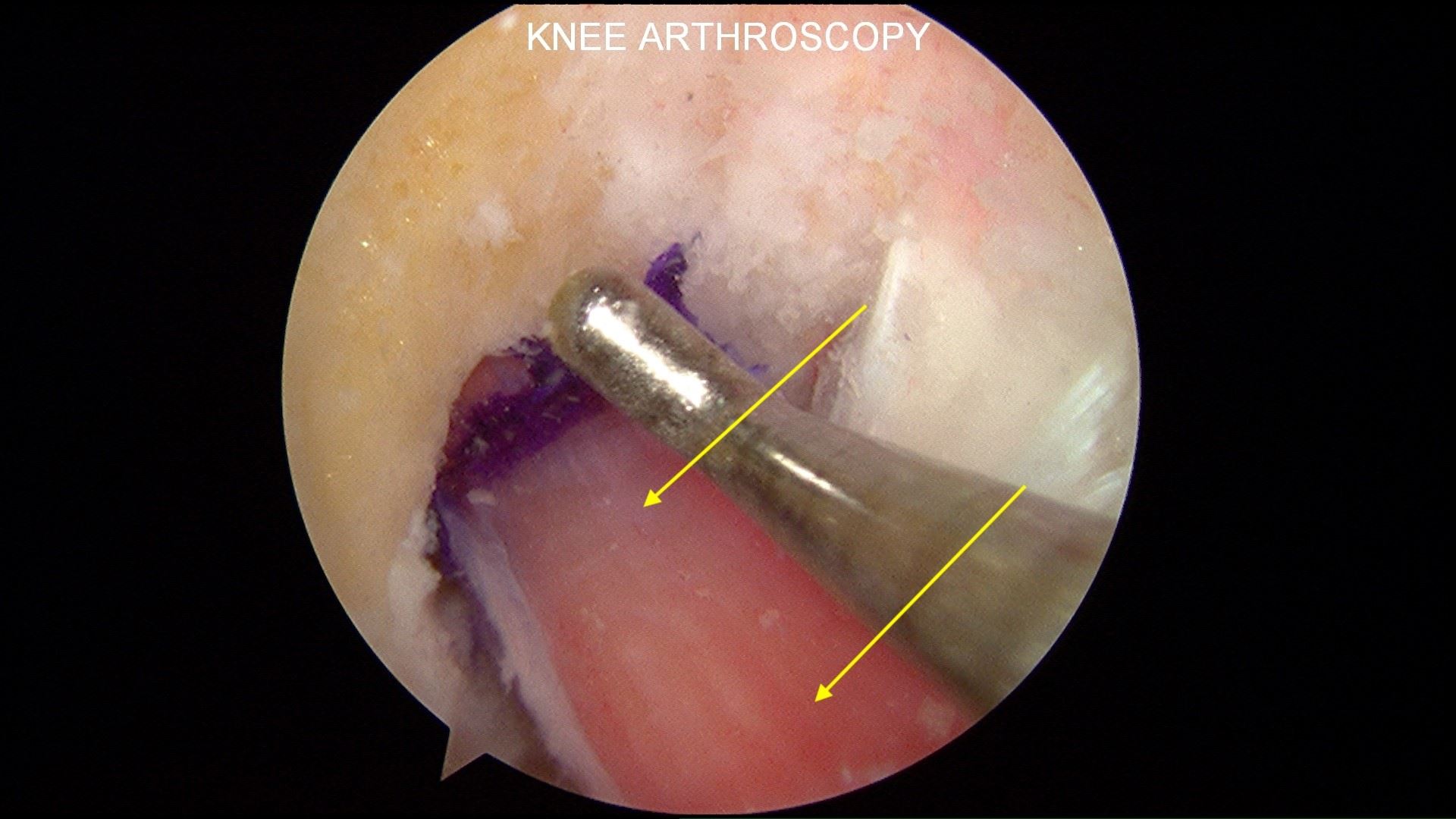
Find a Knee Surgeon
If you have an ACL tear, our board certified, fellowship-trained knee surgeons will build a custom treatment plan to help you get back to doing the things you love doing.
Hoag Orthopedic Institute is ranked as one of the top Orthopedic Hospitals by U.S. News & World Report in 2022-2023. Contact Hoag Orthopedic Institute today to schedule a consultation with one of our knee doctors.
Find a knee surgeon that treats ACL tears. Call us at (949) 705-6493 to make an appointment.
-
 Returning to Boxing After Surgery Knee, Sports Medicine
Returning to Boxing After Surgery Knee, Sports Medicine"Procedure: Right Total Knee Arthroplasty When Brad retired nearly 20 years ago at age ..."
Read More -
 Back to Mobility and Me Knee
Back to Mobility and Me Knee"Procedure: Bilateral Total Knee Arthroplasty Seeing the world from the back of a Gold ..."
Read More -
 Back to Skiing Knee, Sports Medicine
Back to Skiing Knee, Sports Medicine"Procedure: Simultaneous Bilateral Total Knee Arthroplasty (SBTKA) – October 2016 ..."
Read More -
 Back to Gardening Knee
Back to Gardening Knee"Verna’s days are much more fruitful after having repairs to both knees. For the first ..."
Read More -
 Back to Golf After Knee Replacement Knee
Back to Golf After Knee Replacement Knee"Retired dentist Dr. Gregory Cramm and his wife, Cathy, enjoy going out for a nice ..."
Read More -
 Back to Racing Knee
Back to Racing Knee"Racecar driver Danny Thompson, 67, set the national land speed record at 406.7 mph in ..."
Read More -
 Back to Skiing and Snowboarding Knee
Back to Skiing and Snowboarding Knee"Rick Rengel, age 58, was having a great time speeding down a ski slope in Utah in ..."
Read More -
 Back to Cooking Knee
Back to Cooking Knee"“If I hadn’t had my knee replaced, I wouldn’t be out and about – I would be home in ..."
Read More -
 Back to a Family Christmas Knee
Back to a Family Christmas Knee"My wife, Lucille, was admitted to the Hoag Orthopedic Hospital, Irvine, California ..."
Read More -
 Back to the Golf Course Knee
Back to the Golf Course Knee"Shooting pain down the leg. Too painful to stand more than minutes. Sitting up to ..."
Read More
.png)

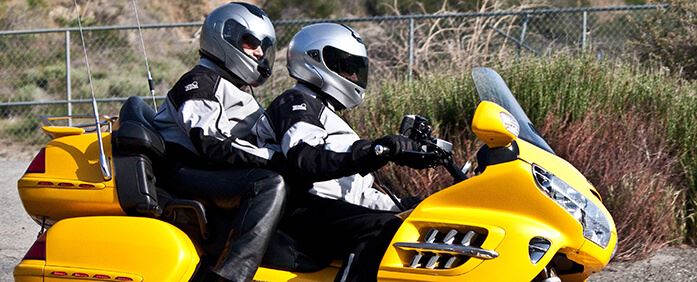










_20190109061103.png)